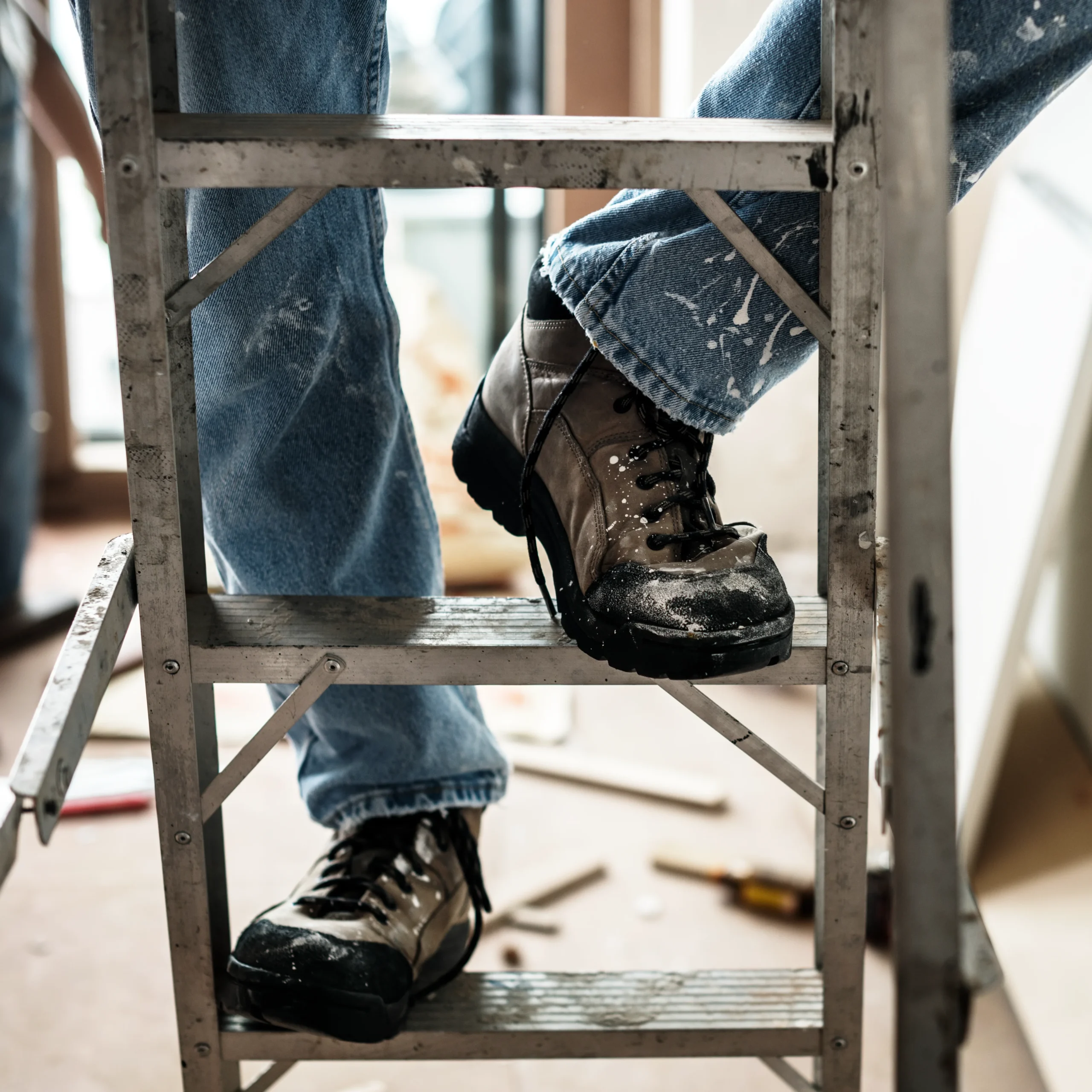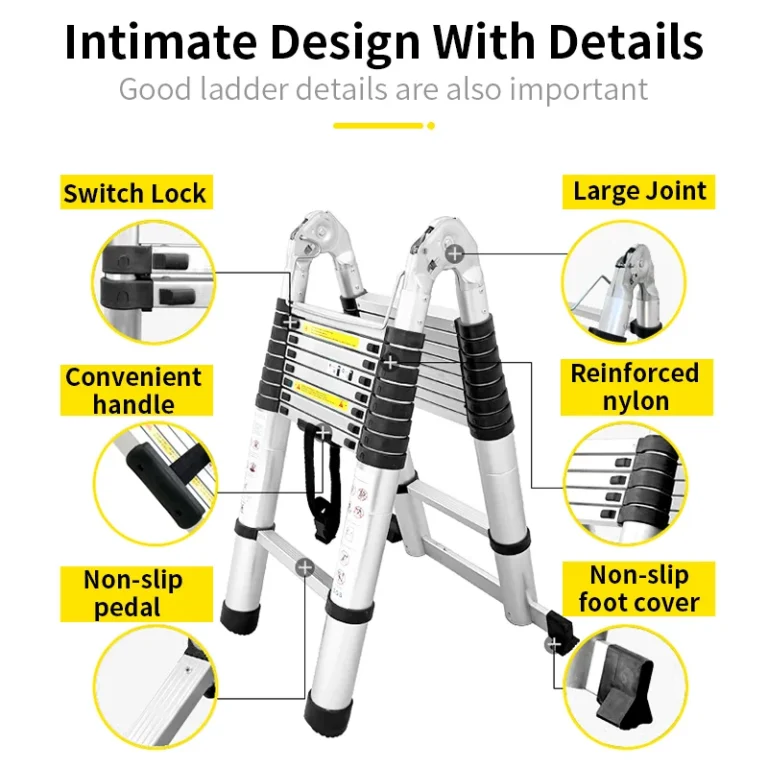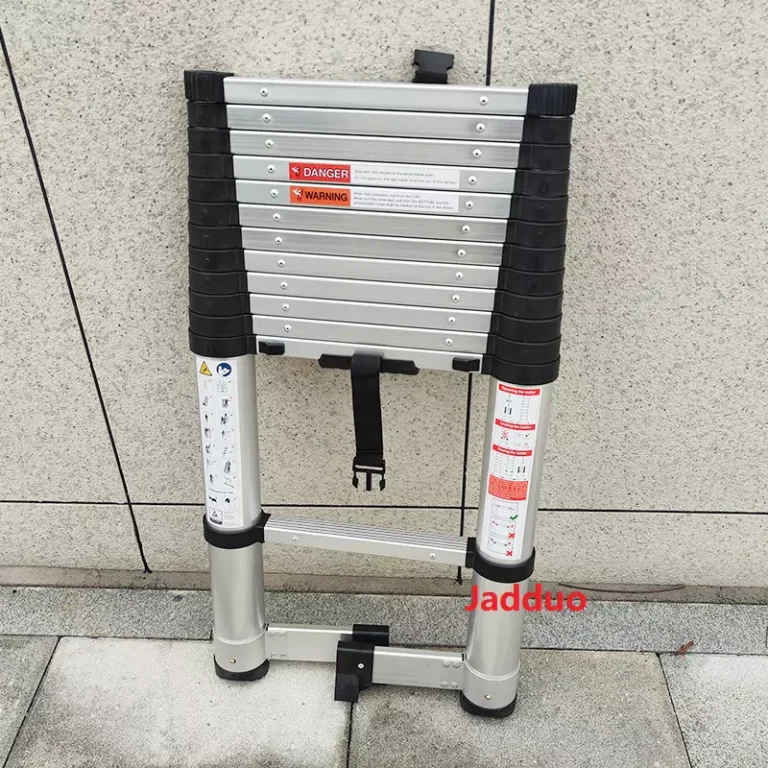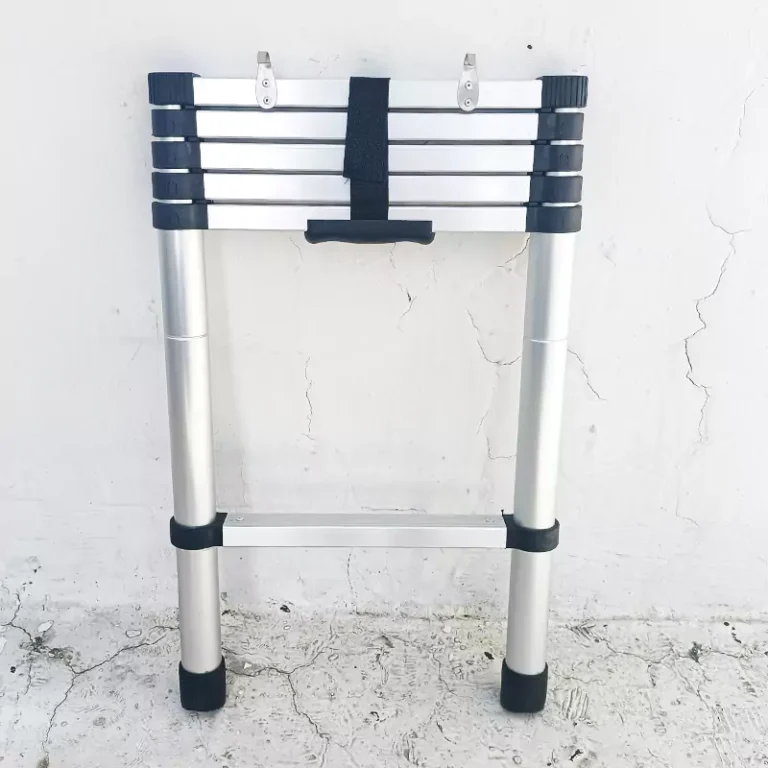Picking a safe extension ladder is super important. You need to know the rules about how wide it should be. These rules, like EN131 in Europe and ANSI A14 in the U.S., set standards for base width, rung spacing, and balance to keep accidents away. This guide dives into the main width rules, what affects ladder design, and how to check if your ladder follows the rules. Additionally, we’ll show how JADDUO makes awesome, rule-following extension ladders for work or home.

What Are the Regulatory Width Standards for Extension Ladders?
Key Guidelines and Requirements for Ladder Widths
The width of an extension ladder is a big deal for safety. Rules from groups like EN131 in Europe and ANSI A14 in the U.S. make sure ladders are wide enough to stay steady. These rules say the base of an extension ladder needs to be wide enough to stop it from tipping over. For example, EN131 says ladders taller than three meters need stabilizers or extra features to be safe.
Ladders also need enough space between side rails for users to climb comfortably. The rungs, or steps, should be 30cm to 40cm apart. This depends on what the ladder’s used for and who’s climbing it. These sizes help keep you balanced and less tired when using the ladder for a long time.
Why Following Width Rules Matters
Not following ladder width rules can lead to big trouble. In China, over 10,000 people get hurt each year from bad ladders or using them wrong. Many of these accidents happen because ladders don’t meet safety rules. Scary fact: one in four deadly falls involves a ladder! Sticking to these standards isn’t just about following the law. It’s about keeping people safe from falls and injuries.
What Factors Influence the Width of an Extension Ladder?
Material and Design Choices
What an extension ladder is made of affects how wide and steady it is. Aluminum alloy ladders are super popular. They’re light but tough, and they don’t rust easily. Stainless steel ladders are heavier, but they’re extra strong for big jobs like in factories.
The way a ladder is built matters too. Overlapping parts help spread weight evenly, so the ladder stays solid. Wide rungs with grippy surfaces make climbing safer. They stop your feet from slipping and keep you comfy during long tasks.
Intended Use and Special Rules
What you use an extension ladder for changes how wide it needs to be. Ladders for construction sites often have wider bases and stabilizers. This helps them stay steady on bumpy ground. Industrial ladders might need to hold more weight for tools or heavy stuff. Home ladders, though, are made to be easy to carry. They might be narrower to fit in tight spots like closets or garages.
How Can You Check If Your Extension Ladder Follows the Rules?
Measuring the Width of Your Extension Ladder
To make sure your extension ladder is okay, measure its base width when it’s fully stretched out. Check if it matches EN131 or ANSI A14 rules. Also, measure the space between rungs. It should be between 30cm and 40cm.
If your ladder is taller than three meters, look for stabilizers or supports. These are often required to keep the ladder steady and safe.
Spotting Common Problems
Some ladders don’t follow the rules. They might have a base that’s too narrow or no stabilizers. Uneven rung spacing can make climbing tricky. Ladders without grippy rungs or feet are super risky. Check your ladder often for loose bolts, cracks, or worn-out parts. These can make it unsafe and break the rules.
For folks wanting safe, rule-following ladders, JADDUO has premium extension ladders with cool safety features. Think wide, non-slip steps and strong locks to keep you steady.
The Role of JADDUO in Providing Compliant Extension Ladders
Overview of JADDUO’s Ladder Products and Features
JADDUO is a big name in making ladders. Started in 2015 in Yongkang, China, they focus on creating safe, top-quality extension ladders. Their products include telescopic ladders, A-frame step ladders, industrial platform ladders, and fiberglass ladders for electric or telecom jobs. These ladders have neat features like wide, grippy steps and tough locking systems to make climbing safe and easy.
JADDUO follows strict quality rules with ISO9001:2015 certification. Their ladders meet EN131, ANSI A14, GS, and RoHS standards. They make 30,000 ladders a month and send them to over 50 countries. This makes JADDUO a go-to choice for pros and homeowners who want safe, trusty ladders.

How JADDUO Makes Sure Ladders Follow Rules
JADDUO takes safety rules seriously. They use smart engineering to build ladders that meet or beat EN131 and ANSI A14 standards. These rules cover base width, rung spacing (30cm to 40cm), weight limits (150kg), and non-slip features.
For example, tall ladders get stabilizers to stop tipping. JADDUO uses high-quality aluminum alloy. It’s light but strong, and it meets safety and eco-friendly rules. By following these standards, JADDUO keeps users safe and cuts down on risks from bad ladders.
Recommendations for Choosing the Right JADDUO Extension Ladder
Picking the Right Width for Your Needs
Choosing the right width for your extension ladder is key to staying safe and getting work done. Rules like EN131 say ladders over three meters need stabilizers for balance. Here’s how to pick a JADDUO ladder:
- Home Use: Go for narrower models. They’re easy to move but still steady enough for chores like painting or cleaning gutters.
- Work Use: Pick wider bases for rough ground or heavy jobs with tools. These are great for construction or factory tasks.
Rung spacing matters too. For tight spots or careful work, 30cm spacing is best. On big, open sites, 40cm spacing lets you climb faster without wobbling.
Extra Safety Features to Look for in JADDUO Ladders
Safety is a must when picking an extension ladder. Here are cool features to check out in JADDUO ladders:
- Non-Slip Steps: Wide, textured steps keep your feet comfy and stop slips.
- Stabilizers: These help tall ladders stay balanced, especially on uneven ground.
- Strong Locks: Tough locking systems keep ladder sections tight during use.
- Material: Aluminum alloy is light, strong, and won’t rust, perfect for inside or outside jobs.
These features help you pick a ladder that’s safe and fits your needs.
FAQs
Q1: Why do ladder width rules matter?
A: Width rules make sure extension ladders are steady. They set minimum base sizes and add stabilizers for tall ladders to keep you safe.
Q2: How do I pick the right rung spacing?
A: Use 30cm spacing for precise work or small spaces. Choose 40cm for open areas where you need to climb fast.
Q3: Are JADDUO ladders okay with global safety rules?
A: Yup! JADDUO ladders meet or beat EN131, ANSI A14, GS, and RoHS standards for safety in all kinds of jobs.









